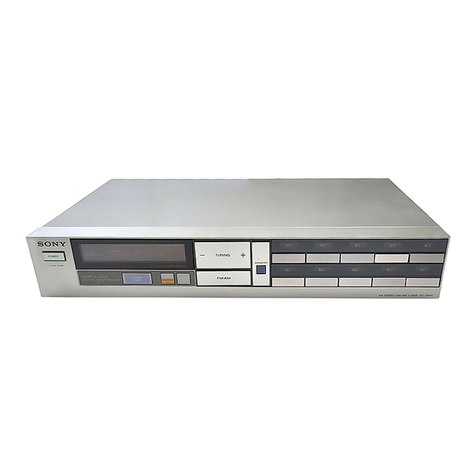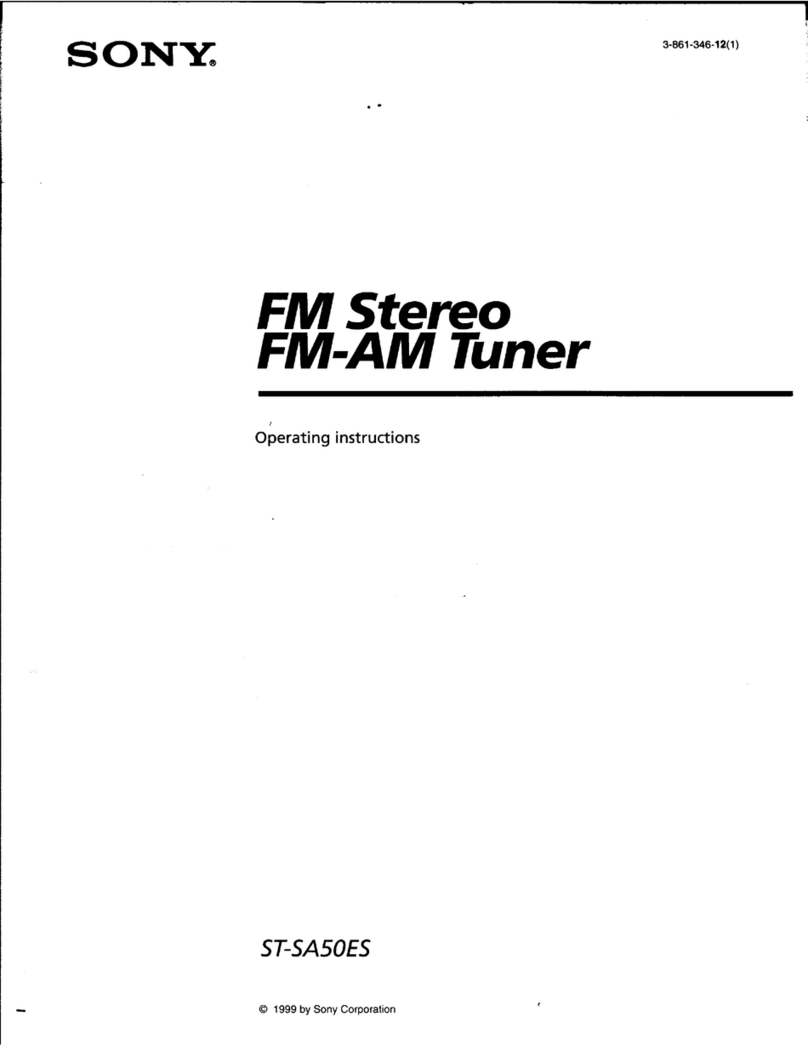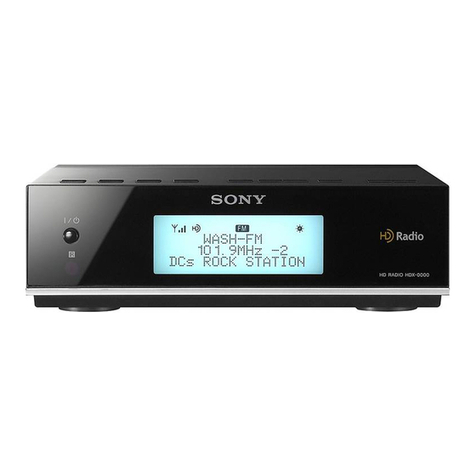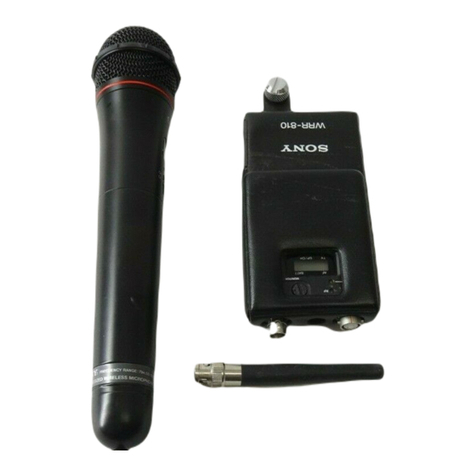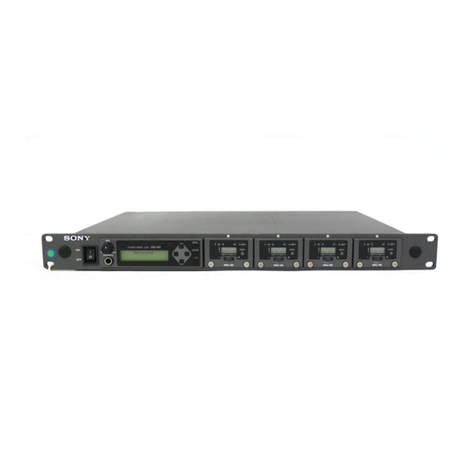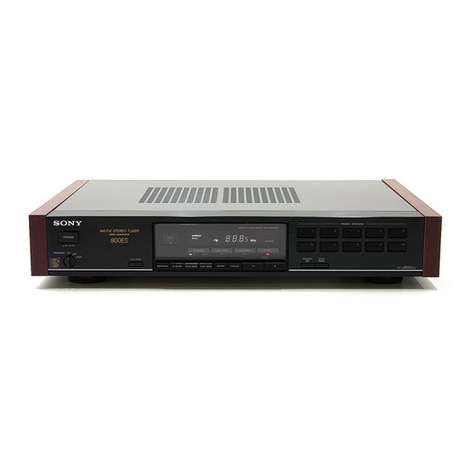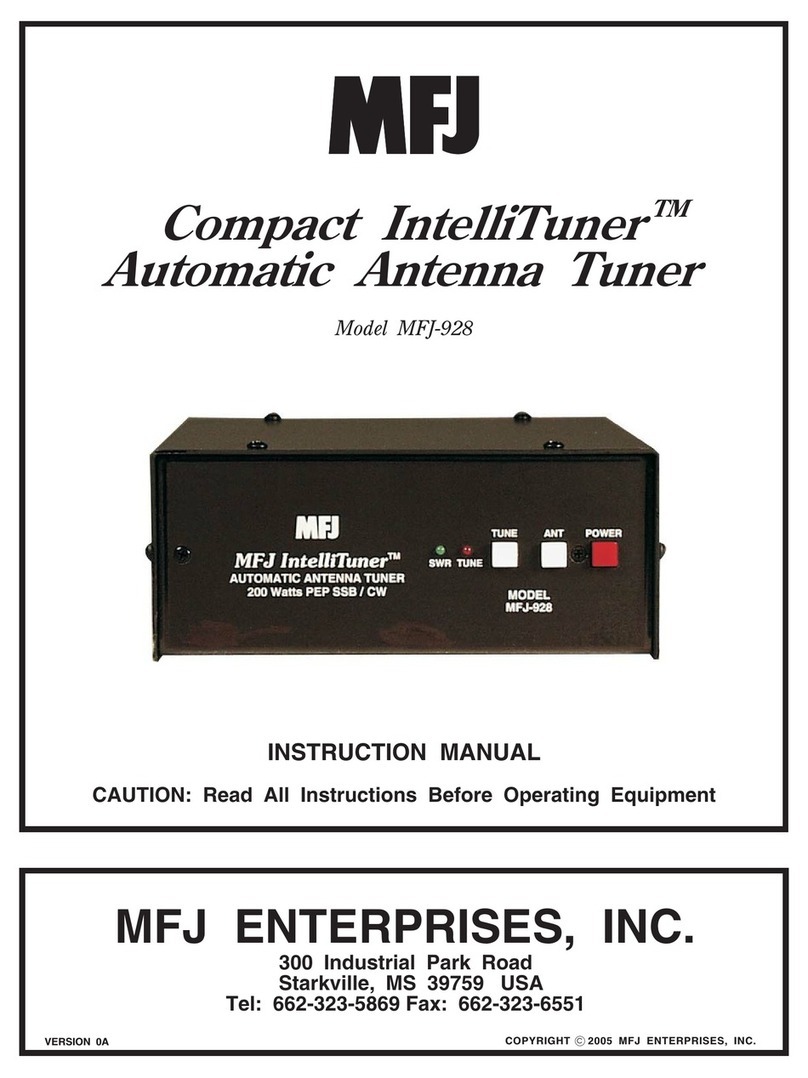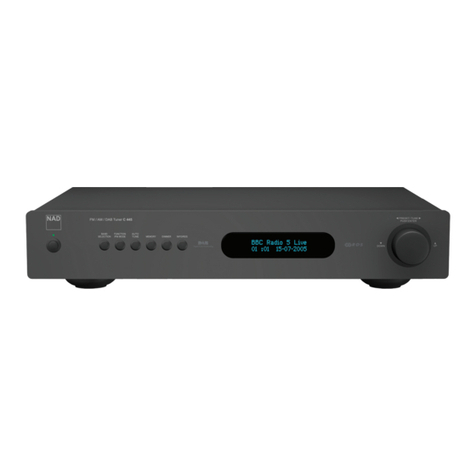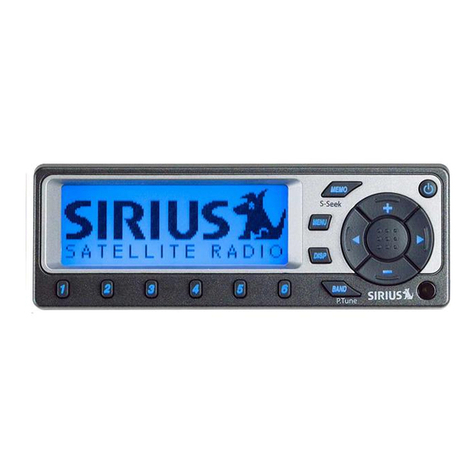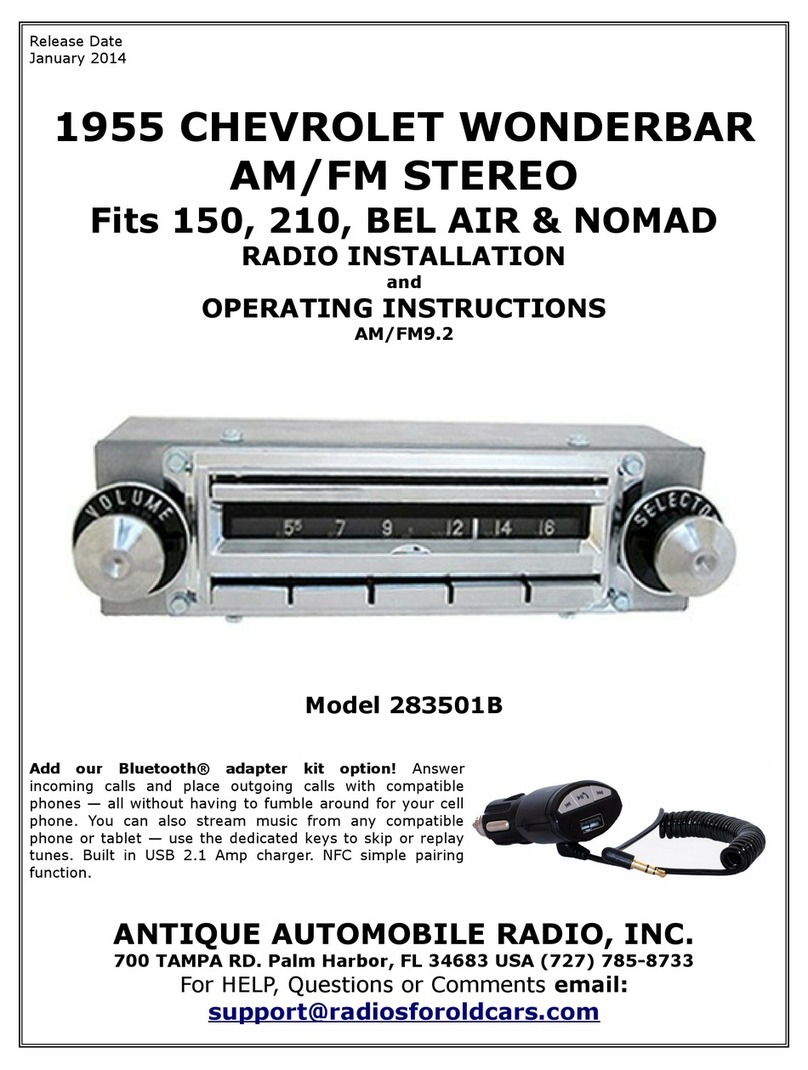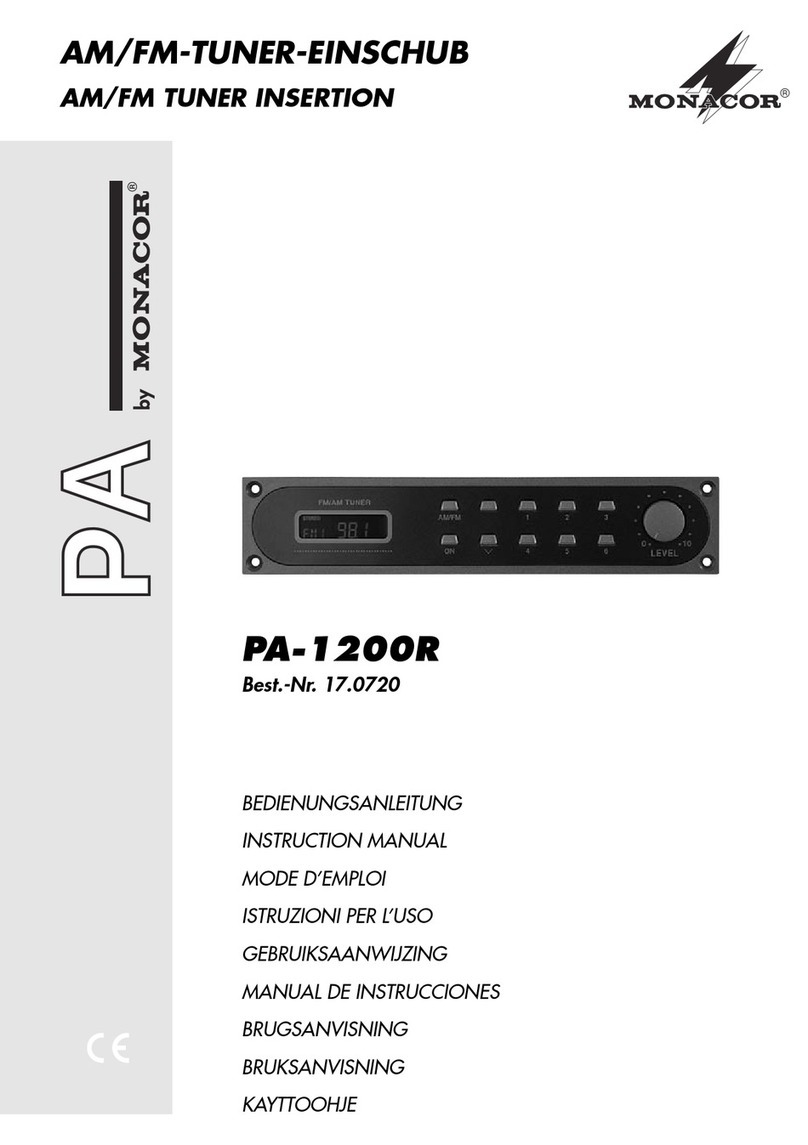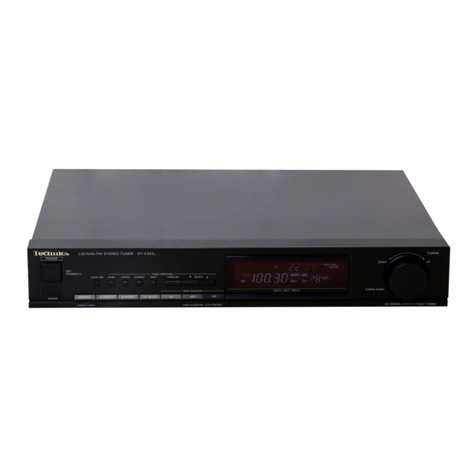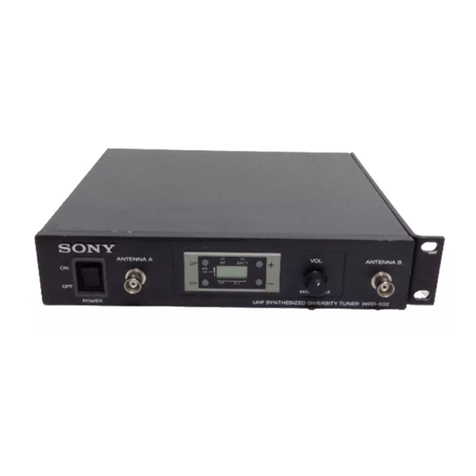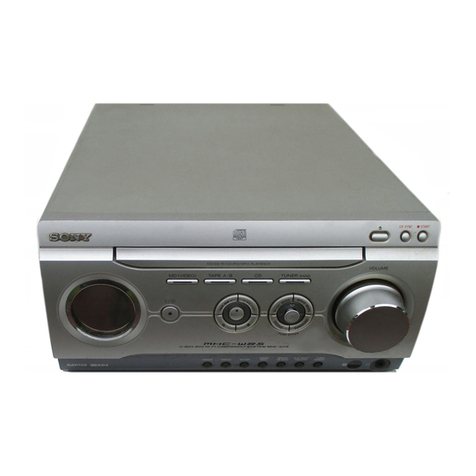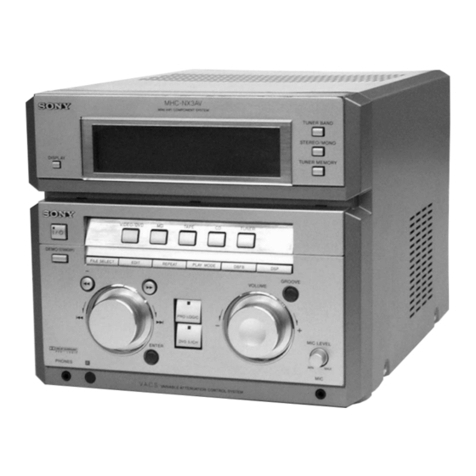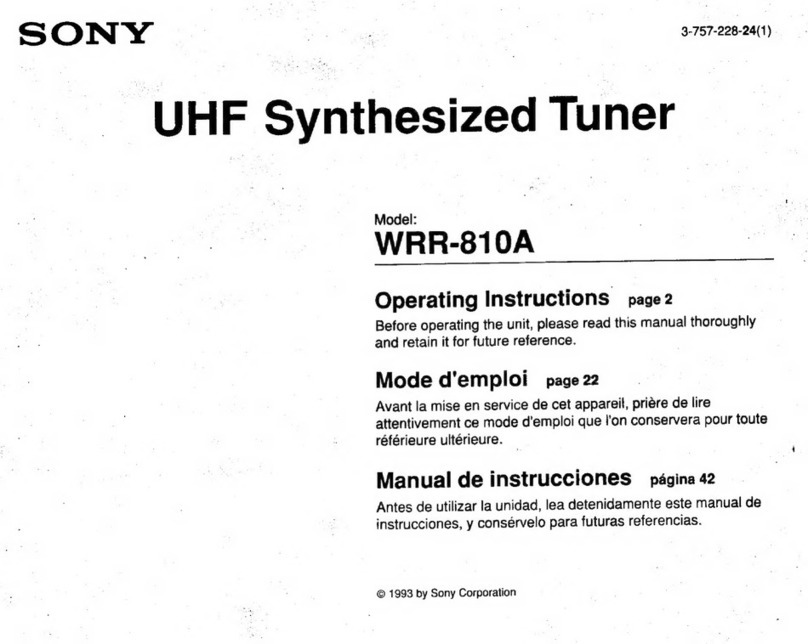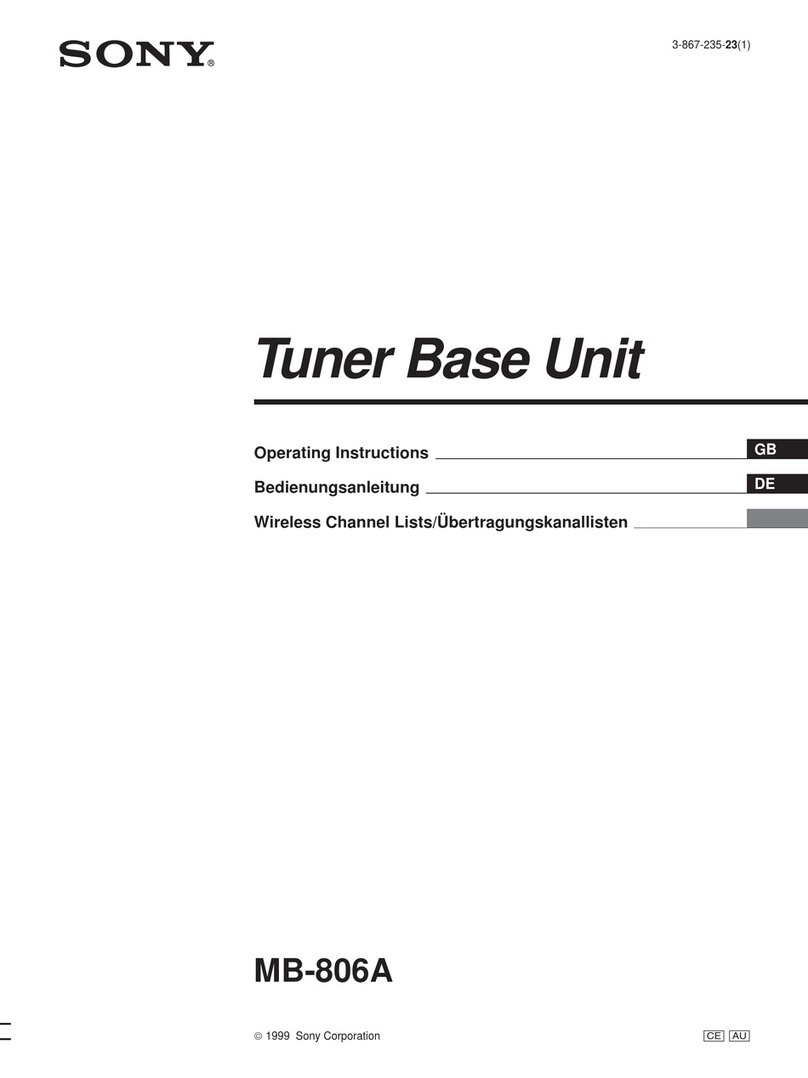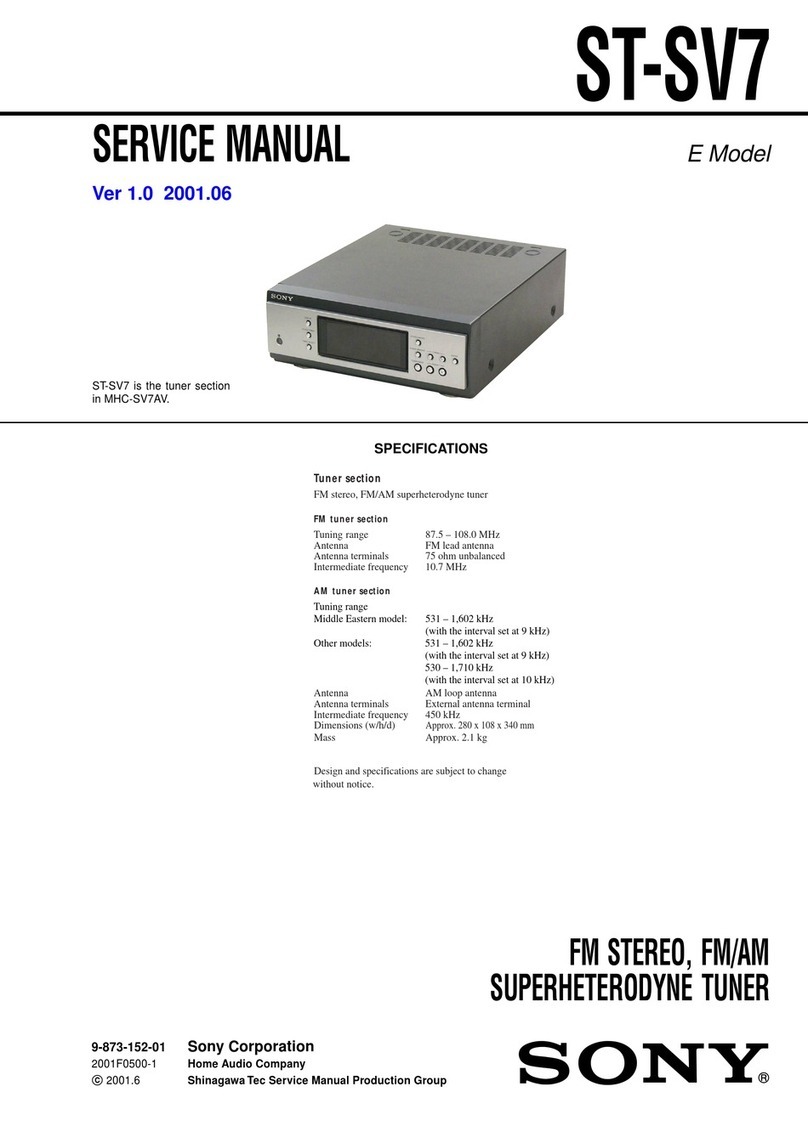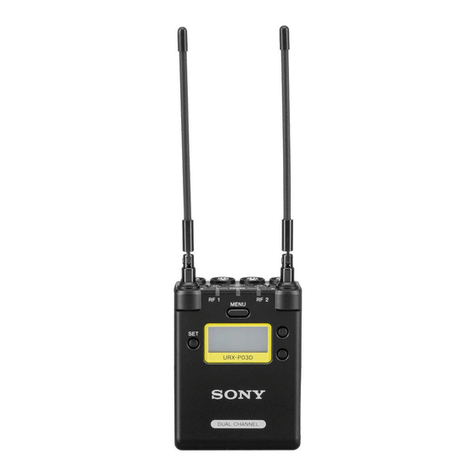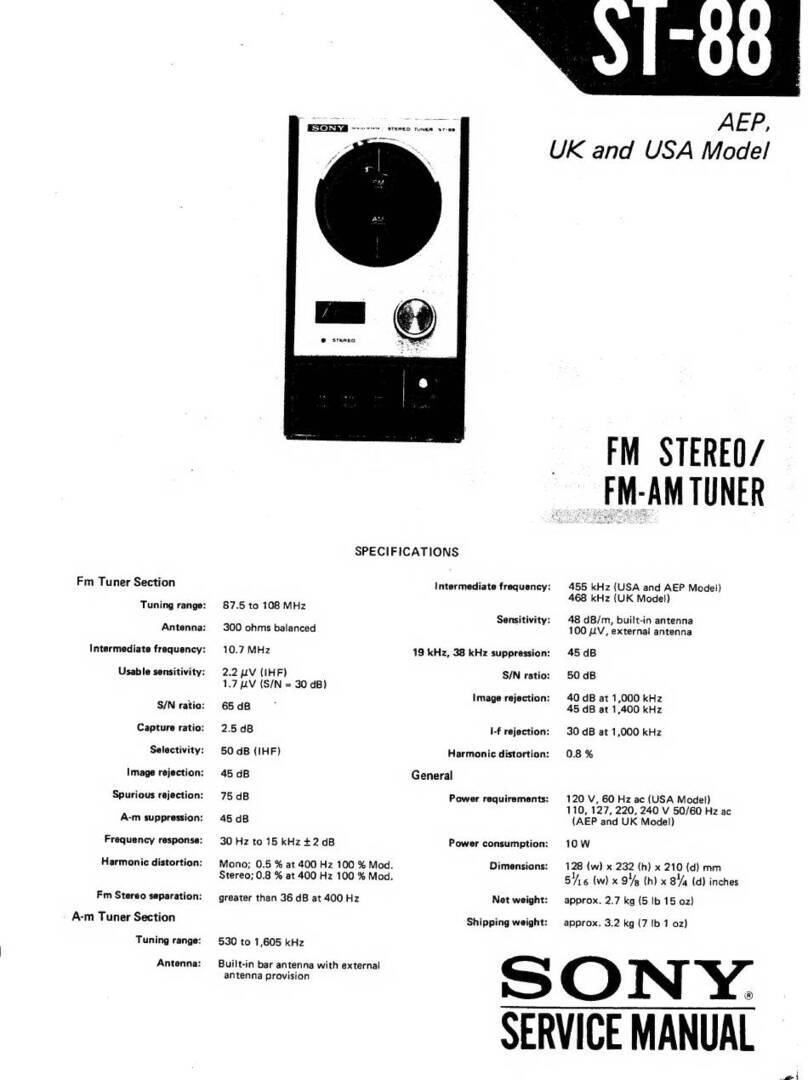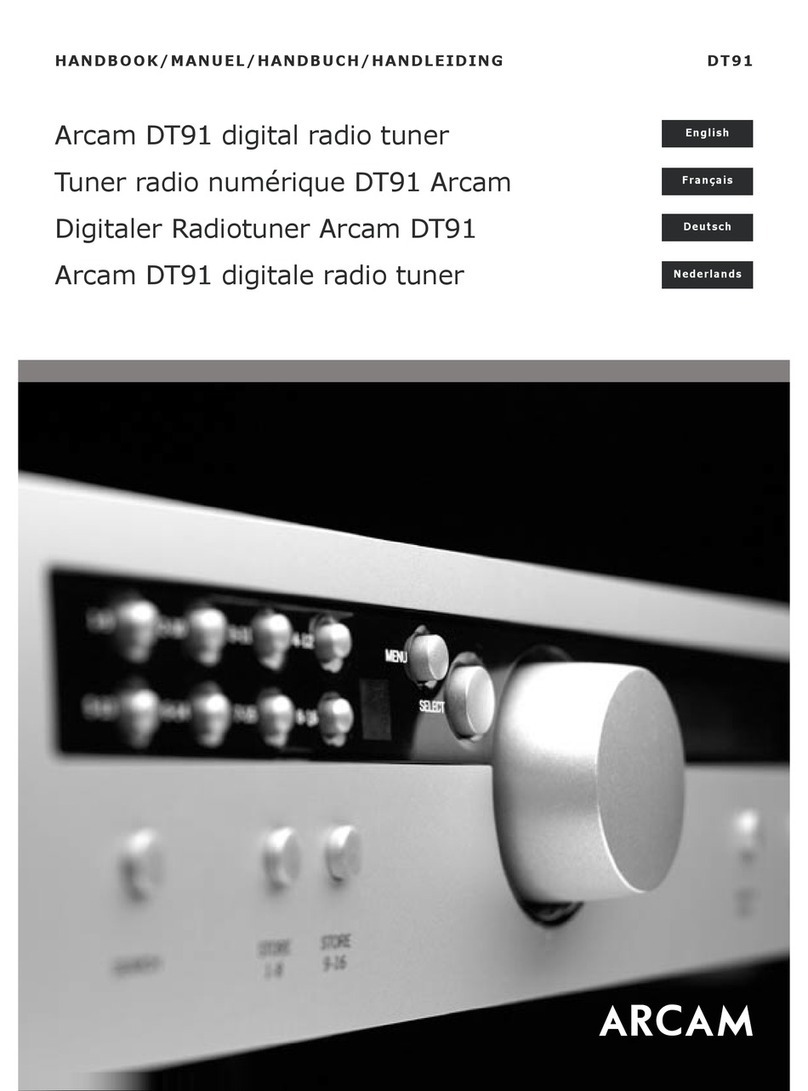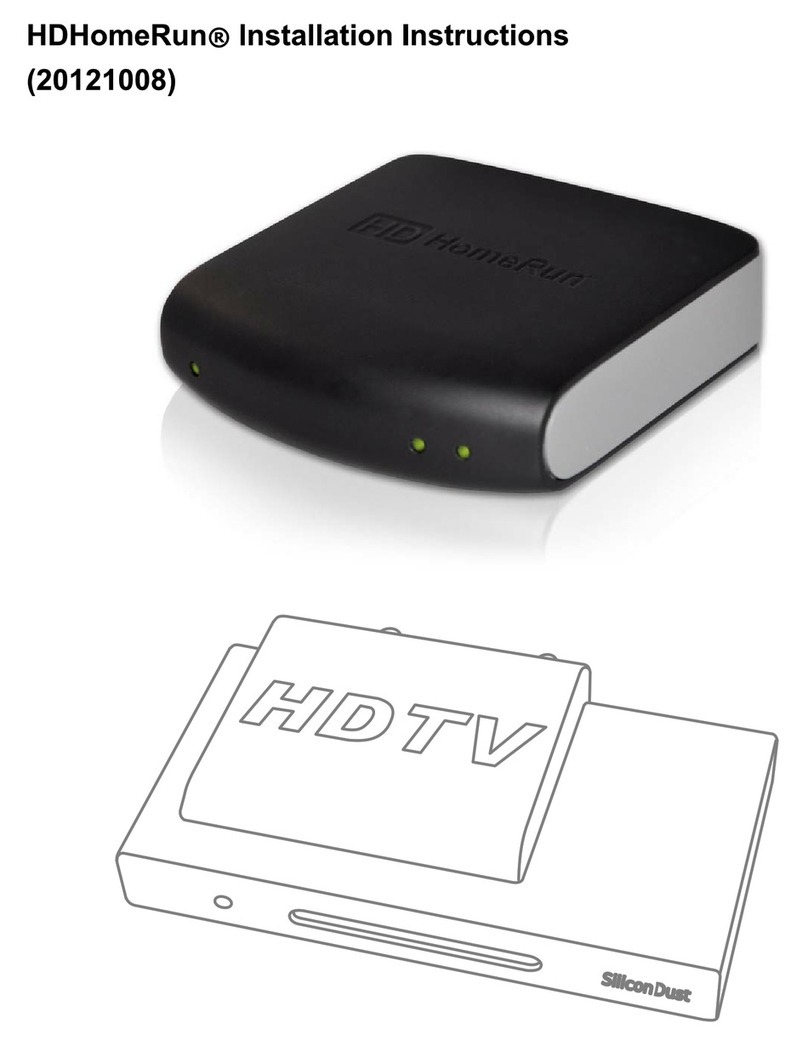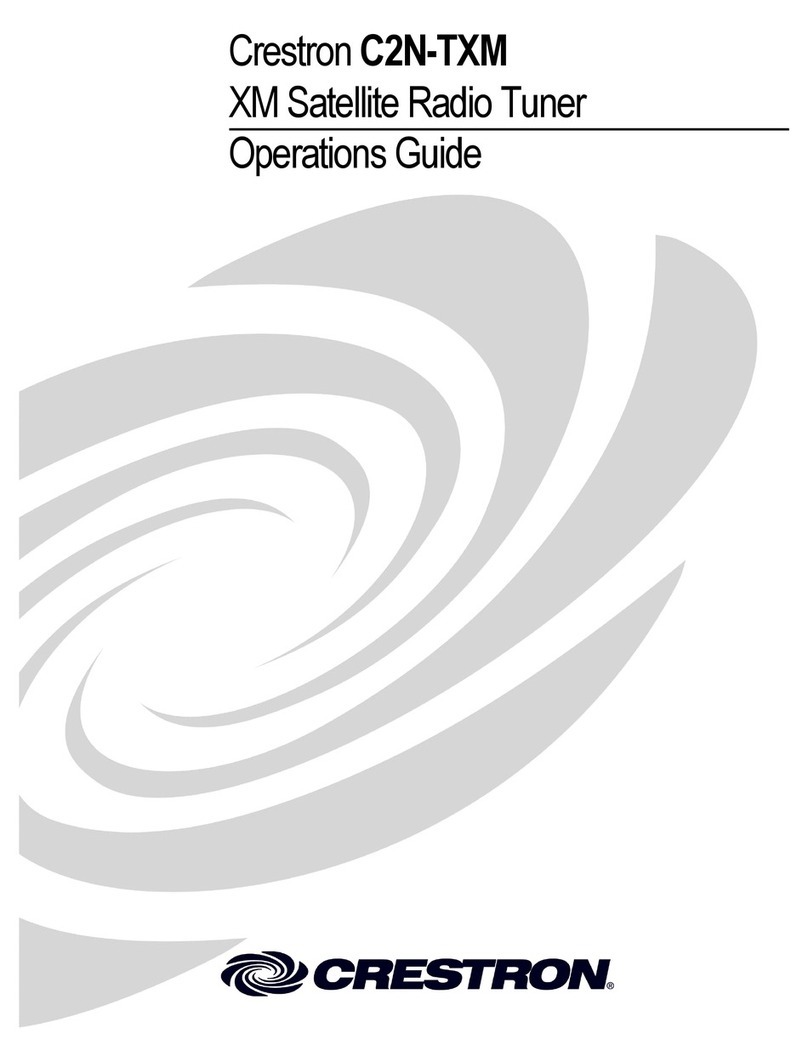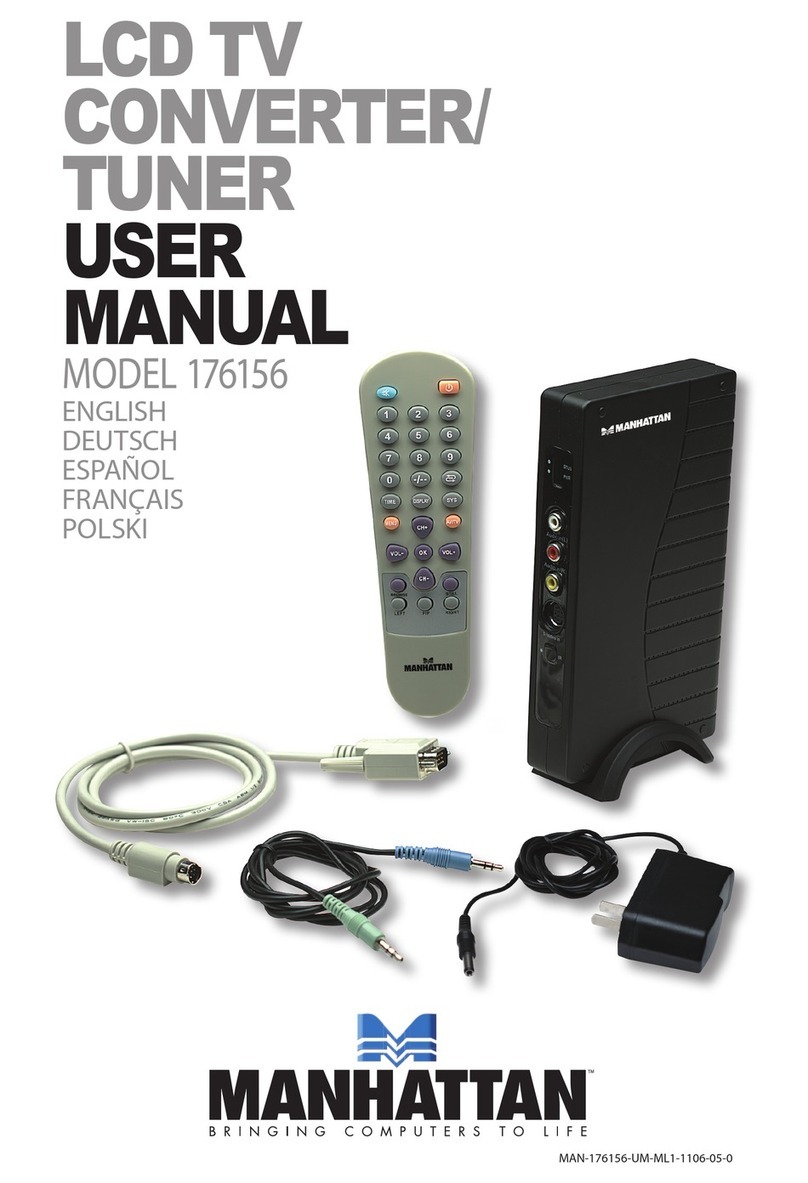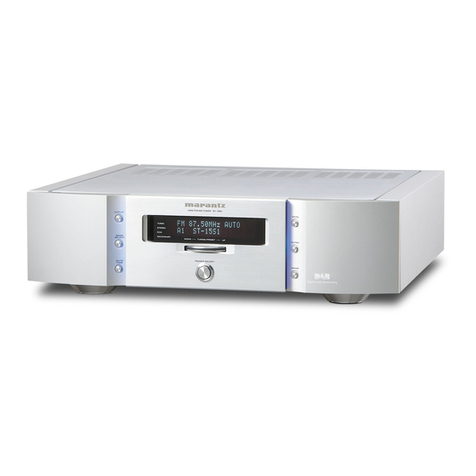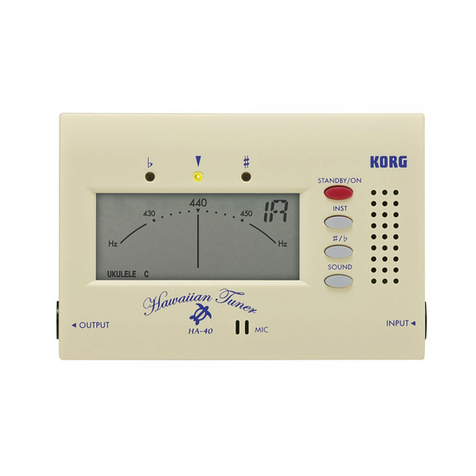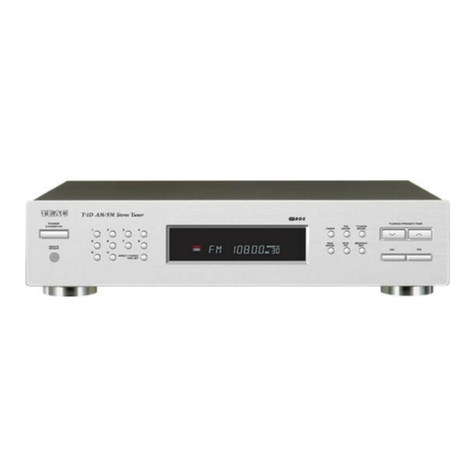Overview
2
EN
Features
Phase Locked Loop (PLL) synthesized
system
The WRR-801A has a refined phase locked loop
(PLL) synthesizer circuit.
Preprogrammed wireless channel plan for
simultaneous multichannel operation
The WRR-801A has many preprogrammed, easily
settable channels for simultaneous multichannel
operation.
Modular multichannel reception
By installing optional WRU-801A UHF Synthesized
Tuner Units, you can receive up to six channels on one
WRR-801A unit.
Versatile display
A liquid-crystal display provides a variety of
information, including the levels of the reception
channels, RF information and transmitter battery
alarm.
Space diversity reception system
The WRR-801A provides stable signal reception with
minimum dropout.
Tone squelch circuit for noise elimination
A built-in squelch circuit eliminates noise and signal
interference when the WRR-801A is in signal
reception standby mode.
Overview
The WRR-801A is a reliable UHF synthesized
diversity tuner for the 800-MHz-band Sony UHF
wireless microphone system which uses the frequency
bands allocated for UHF TV broadcasting.
This tuner is designed to enable simultaneous use of
multiple channels when channels are selected
according to the channel plan.
Installing six WRU-801A UHF Synthesized Wireless
Tuner Units will enable six-channel operation on the
tuner. At shipping, one tuner unit is installed in the
tuner, and additional tuner units (sold separately) can
be installed with easy operation.
In building up a UHF wireless microphone system, be
sure to combine a microphone/transmitter and a tuner
having the same TV channel number (62, 64 or 69).
CE62 model
A 14 MHz frequency band is assigned to the WRR-
801A/CE62 model, permitting it to operate on any of
111 receiving frequencies in 125-kHz steps of Sony
original channel plan or 561 receiving frequencies in
25-kHz steps of German User Group in the range of
TV channels 62 and 63.
The selectable wireless channels and frequencies for this
model are listed pages L-2 through L-8.
CE64 model
A 14 MHz frequency band is assigned to the WRR-
801A/CE64 model, permitting it to operate on any one
of 111 receiving frequencies in 125-kHz steps of Sony
original channel plan or 561 receiving frequencies in
25-kHz steps of German User Group in the range of
TV channels 64 and 65.
The selectable wireless channels and frequencies for this
model are listed on pages L-9 through L-15.
CE69 model
An 8 MHz frequency band is assigned to the WRR-
801A/CE69 model, permitting it to operate on any of
64 receiving frequencies in 125-kHz steps of Sony
original channel plan in the range of TV channel 69 or
14 receiving frequencies in 25-kHz steps of UK
General Use.
The selectable wireless channels and frequencies for this
model are listed on page L-16.
